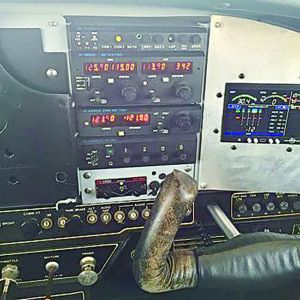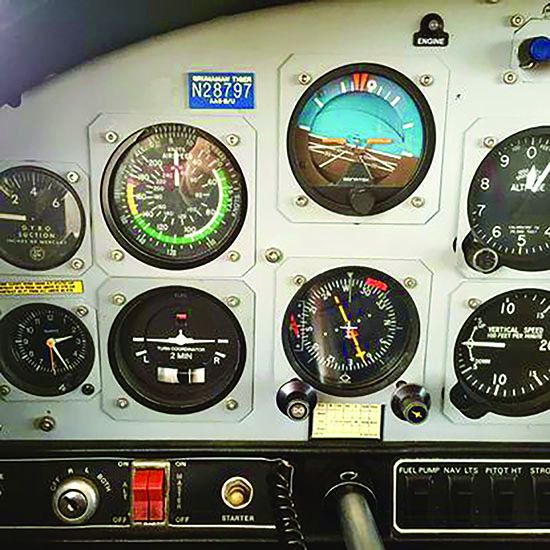This month’s panel for planning is on a 1978 Grumman AA-5B Tiger in need of some modern IFR-capable gear. With a dead Narco HSI and failing Narco navcomms and audio systems, owner David Troup knows it’s time to spend some money. But like most of us, money is an object, and he’s hoping to stay in the $30,000 ballpark to make the airplane a reliable light IFR machine.Troup is realistic that without a functioning autopilot (which could easily break the budget), his IFR flying will be limited to busting through cloud layers on the way to VFR conditions.
BUDGET EFIS

Starting on the pilot’s instrument panel, there’s a traditional six-pack of flight instruments including a vacuum-driven Sigma Tek attitude gyro and Narco DGO-series HSI. One option is to ditch both of these (and the vacuum system) and install dual Garmin G5 flight instruments. One will serve as the primary attitude indicator and the other as the electronic HSI. Paired together, the backup battery-equipped (four-hour endurance) instruments offer failsafe reversionary and dual-ADAHRS redundancy. Labor costs are kept at a minimum because there shouldn’t be a need to cut new metal since the G5s fit in the existing 3 1/8-inch instrument cutouts.
The price of the G5 attitude indicator is $2725 and the heading indicator/EHSI is $3095, plus the labor to remove the vacuum system plumbing and pump. The G5 instruments are fair game for the Grumman, because the AA-5B (along with 560-plus other models) is on the AML-STC for installation.
The main radio stack is a museum of Narco stuff, top to bottom, although the AT150 transponder has been replaced with an Appareo Stratus ADS-B Out transponder to comply with the mandate. Plus, it offers reliable Mode A/C capability, compared to the mechanical cavity-equipped Narco. The Narco CP136M audio panel and PS Engineering intercom come out, and so do the Narco MK12D navcomm and Com810 transceiver. Essentially, gut the entire radio stack.
A good option for reliable audio is PS Engineering’s PMA8000G. It has Bluetooth, IntelliAudio Dimensional Sound, a USB charging port plus a digital recorder—worlds ahead of the Narco panel. The panel alone is $2100, plus installation for four-seat intercom operations.
For primary comm/GPS, Garmin’s GNC 355 packs a lot of punch for $7695. In addition to adding WAAS LPV capability to the airplane, it has built-in Flight Stream wireless capability for sending flight plans back and forth to Troup’s Garmin aera 660 portable GPS (he also has a Garmin GDL 50 portable ADS-B receiver). For a secondary comm radio there are a couple of good options, including Garmin’s $2395 GTR 225 and Trig’s $2000 TY96A. If backup VOR/ILS boosts the comfort factor in case the GPS goes down, a good option is the Trig TX56 navcomm, which is compatible with the Garmin G5. But it adds nearly $2000 over the price of a comm-only radio.
It’s tough to put a number on the installation labor, but it’s important to budget extra for antenna work and cabling, circuit breakers, panel lighting and the usual stuff that tags along with a major installation to a panel that hasn’t seen one in a while. With the major equipment spec’d here, the bottom line could flirt with $25,000 or more, but still within the $30,000-ish budget.
Worth considering instead of the dual G5 instruments are dual Garmin GI 275 instruments. They too fit the existing instrument holes, but have newer display technology, plus the option for synthetic vision. At $4195, the GI 275 attitude indicator is roughly $1500 more the G5 and the $4595 GI 275 EHSI is over $1500 more than the G5 EHSI. That could be worth the price delta for more modern tech, although the money might be better saved for an autopilot.
Still, it’s a reliable avionics package that adds utility and resale value.


